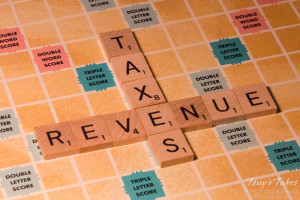The Great Schools, Thriving Communities initiative #93 proposes a $1.6 billion increase in state taxes. It will appear on the ballot in November if enough valid petition signatures are gathered. The initiative changes the state constitution, so it needs 55% voter approval to pass.

This is not a discussion of initiative proposals to enhance the pre-primary through secondary public school system in Colorado. This is a critique of the ill-conceived tax mechanics in the initiative.
Initiative #93 unnecessarily complicates both the state income tax and property tax systems. Funding public education is an important part of what state government does, but public education is not so special that it requires special tax machinery to fund it.
Public school administrators want a steady, guaranteed source of funding that shortcuts the Taxpayer’s Bill of Rights (TABOR) and bypasses the requirement to seek voter approval for tax increases. But Colorado taxpayers dislike putting tax systems on autopilot. Taxpayers are accustomed to being asked for their approval on tax questions, and they seem to like that. Not including taxpayers in decisions about taxes is a big reason TABOR happened.
Initiative #93 establishes a special, separate fund in the state treasury for the $1.6 billion in new taxes: the Quality Public Education Fund (QPEF). The tax dollars deposited into and spent from the QPEF are exempted from TABOR revenue and spending limits.
The state income rate is currently 4.63%. TABOR requires all federal taxable income to be taxed at one rate. Initiative #93 exempts itself from the TABOR one-rate requirement. The initiative keeps the 4.63% rate as a base rate for all income tax filers and it then adds four new incremental rates on top of the base 4.63% rate for individual filers. The highest income tax rate jumps to 8.25%.
The income tax rate on all C corporations goes up 1.37 percentage points to 6%. That is a corporate tax increase of 29.6%.
Only the extra incremental income taxes paid by high-earners in the four new higher tax rate tiers and by C corporations make up the $1.6 billion increase in state taxes that go into the QPEF. Those new income tax dollars deposited into the QPEF are strictly segregated from all other state revenues. They cannot be diverted for any use other than public education.
In 2017 Congress simplified and reformed the federal income tax system by eliminating and compressing tax rates, and by lowering corporate taxes to make business more competitive. Initiative #93 proposes to do just the opposite to the Colorado income tax system.
Our current property tax system is based on the Gallagher Amendment. Gallagher initially established a split assessment ratio of 21% for residential properties and 29% for nonresidential properties.
![]() An assessment rate is applied to a property’s market value to calculate its assessed value. The assessed value is multiplied by the mill levy to calculate the property tax.
An assessment rate is applied to a property’s market value to calculate its assessed value. The assessed value is multiplied by the mill levy to calculate the property tax.
The economic theories at the base of Gallagher weren’t particularly prescient, so the initial residential assessment rate of 21% fell over time to 7.2% today.
Initiative #93 also mandates a split assessment ratio, but one that is different from the Gallagher ratio: 7% on residential properties and 24% on nonresidential properties. As a result, if #93 passes, we would have two property tax systems, and every taxable property in the state would have two different assessed values: one value for school district taxes and one value for taxes paid to all other taxing authorities.
The drop in the nonresidential assessment rate from 29% to 24% would reduce property taxes on nonresidential properties by about 17%. The reduction in the residential assessment rate from 7.2% to 7% would reduce the taxes on residential properties by about 3%. The initiative replaces the lost local property taxes with state income tax dollars appropriated from the special QPEF.
A big problem with Gallagher is that it was written into the constitution and is therefore very difficult to change. That is a common problem with constitutional amendments in Colorado. Initiative #93 would be likewise problematic. Tax parameters, tax rates, and associated details don’t belong in the constitution.
There are certainly problems in our present income tax and property tax systems, but at least both systems are fairly easy to understand. Nothing in Initiative #93 fixes any existing problem. To the contrary, #93 complicates both tax systems and it substantially increases administrative costs to make its new tax mechanics work as intended with adequate review. When was the last time a taxpayer wondered, “Hmmm … What do our state and local governments, and school districts need? Ah ha! More overhead!”
The process of lobbying legislators every year and preparing local mill levy override questions for voter approval every few years is a tedious routine for public school administrators and it sometimes leads to disappointment. But that process gives interested parties time and a good perspective from which to evaluate aspects of our public school system. It also keeps control of the school districts in local hands where it belongs.
Not every request for additional public school funding gets a “Yes” from the voters. Some questions deserve a “No”, like this one.
Steve Miller is the elected assessor in Larimer County, Colorado.


